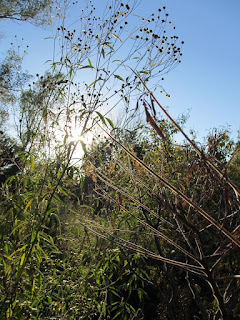 |
| Ironweed |
 |
| Joe pye weed |
 |
| Our American elm died this year. Gorgeous. |
 |
| Agastache foeniculum |
 |
| Senna hebecarpa |
 |
| Looking up through joe pye and ironweed |
 |
| Ironweed |
 |
| Verbena hastata |
 |
| Wild senna and indian grass |
 |
| Wild senna, Senna hebecarpa |
 |
| Smooth aster |
 |
| Sumac all fuzzy |
 |
| Sumac and tall coreopsis |
 |
| New England aster |







I am surprised and saddened to see a free range cat in your garden. Are you not aware the danger this poses to birds and other wildlife?
ReplyDeletetwo cats in our garden as well
ReplyDeleteAnonymous -- That's an assumption. This is an indoor cat who we let out, supervised, for 30-60 minute periods a very few times per year. He is so gun shy I'm not sure he'd know what to do with a bird. Besides, I'm MUCH more concerned about climate change than feral cats when it comes to bird decline.
ReplyDeleteDiana -- It is nice to occasionally have a furry companion walk the flowers with us. :)
Glad to hear it. Have you read "Carbon Capture" by Franzen?
ReplyDeleteAnon -- Yes, it was a very interesting and eye-opening read.
ReplyDeleteCats do far more harm than you know. I've seen them at work and have trapped and socialized or euthanized around 30 cats in my lifetime. We have constructed an outdoor cat enclosure about 12x20x8. They can go in and out any time, can watch the birds all they want. There were 30 goldfinches, a variety of woodpeckers and other songbirds safely eating at the feeders. These cats are very happy with this indoor/outdoor option.
ReplyDeleteWhen they kill a bird in May, you don't see that the other parent has now abandoned the young in the nest or the eggs. So, essentially 4-5 birds have actually died which can certainly harm future generations.
You shouldn't be so dismissive of the commenter. Trust me. She wasn't the only one thinking about that when she saw that photo. That practice should not be promoted. Check this out:
https://www.washingtonpost.com/news/speaking-of-science/wp/2015/10/14/australia-defends-decision-to-put-down-2-million-feral-cats/